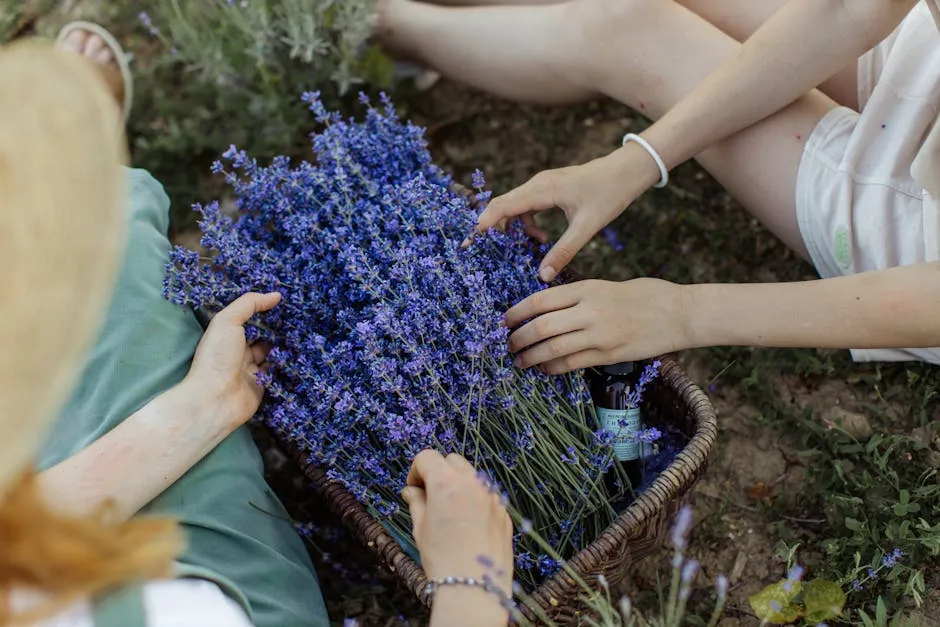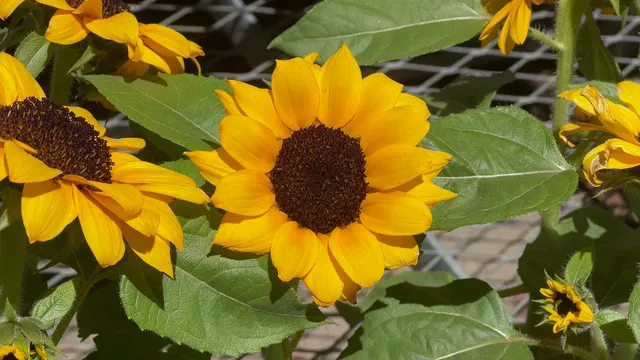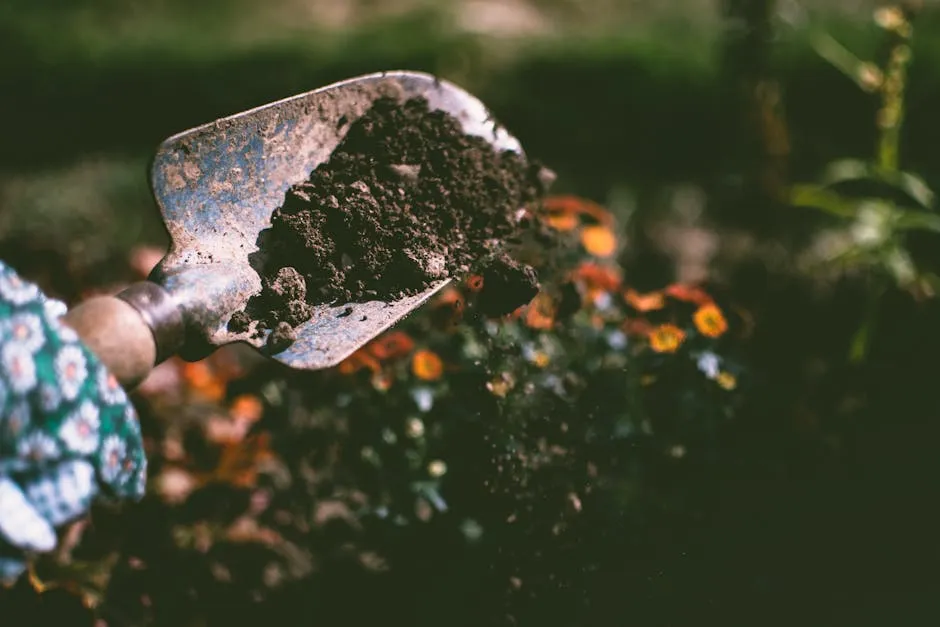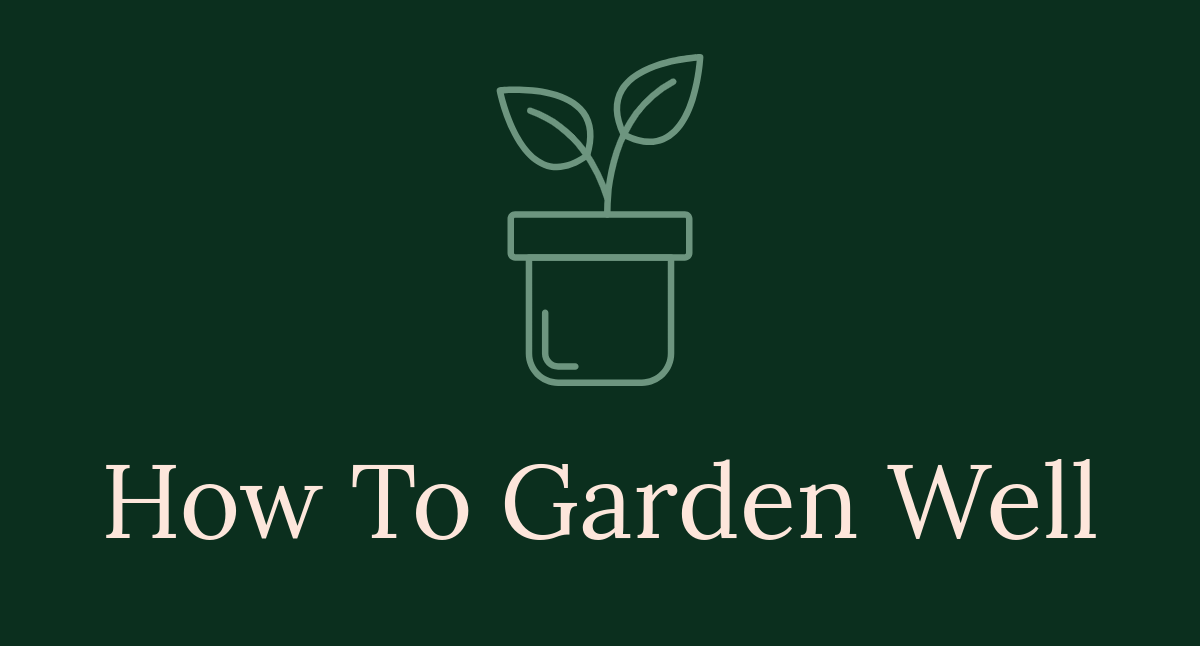

Hidcote Lavender Plants: The Ultimate Guide to Growing and Caring for Lavandula angustifolia ‘Hidcote’
Pruning is essential for maintaining healthy Hidcote lavender. Start by removing dead or woody stems, focusing on the plant’s shape. The best times to prune are early spring and after blooming in late summer. In early spring, trim back about one-third of the plant to encourage bushy growth and new blooms. After the last flowers fade, cut back spent blooms and any leggy growth. This helps maintain a tidy appearance and promotes vigorous growth for the following season.
Introduction
Hidcote lavender is a favorite among gardeners. Its vibrant purple flowers are visually stunning. Plus, it fills the air with a delightful fragrance. This plant is incredibly versatile, fitting well in various garden designs. Whether you want to create a border or a focal point, Hidcote lavender works beautifully. This blog post aims to be your go-to guide for growing and caring for this amazing plant.
And speaking of stunning gardens, don’t forget to equip yourself with some essential gardening tools. A good pair of Gardening Pruning Shears can make all the difference when it comes to maintaining your lavender plants and ensuring they look their best.

Summary and Overview
Hidcote lavender, or Lavandula angustifolia ‘Hidcote,’ hails from the Mediterranean region. Developed by the renowned gardener Gertrude Jekyll, it’s cherished for its rich purple blooms and aromatic leaves. Gardeners love using it in borders, as a centerpiece, or in pollinator gardens. Its compact size makes it ideal for any space, large or small.
Caring for Hidcote lavender is easy, making it perfect for everyone, from beginners to seasoned pros. This plant thrives in sunny spots and well-draining soil. You’ll enjoy its fragrance and the way it attracts bees and butterflies. Growing Hidcote lavender brings beauty and benefits to your garden.
To give your lavender the best start, consider using an Organic Fertilizer for Flowers to provide the nutrients they need for vibrant growth.

What is Hidcote Lavender?
Common Name and Botanical Name
Hidcote lavender is a specific variety of English lavender. Its scientific name is Lavandula angustifolia ‘Hidcote.’ This name pays homage to the Hidcote Manor Garden in England, where it was cultivated. This plant has become a staple in many gardens due to its hardy nature and stunning blooms. Gardeners often choose Hidcote lavender for its easy care and ability to thrive in various conditions.
Common Name and Botanical Name
Hidcote lavender, known scientifically as Lavandula angustifolia ‘Hidcote,’ carries a name steeped in gardening history. It honors the Hidcote Manor Garden in England, a masterpiece created by the famous gardener Gertrude Jekyll. This variety is cherished for its resilience and stunning purple blooms, making it a perennial favorite among gardeners. Its origins trace back to the Mediterranean region, where lavender thrives in sunny, well-drained environments. Over the years, Hidcote lavender has become synonymous with English gardens, symbolizing the enduring beauty of cultivated nature. Gardeners appreciate its compact growth habit and aromatic qualities, which enhance both aesthetic appeal and sensory experience. With its roots in a celebrated garden, Hidcote lavender continues to inspire a love for gardening and a connection to the natural world.
Plant Characteristics
Hidcote lavender boasts a striking appearance that draws the eye. Its rich, deep purple flowers bloom atop upright spikes, creating a vibrant display in any garden. The plant has a bushy, rounded growth habit, which adds fullness to borders and beds. The foliage is narrow and aromatic, featuring blue-green leaves that stay lush throughout the year. This variety thrives in USDA hardiness zones 5 to 9, making it suitable for a range of climates. Typically, Hidcote lavender reaches a height of 12 to 20 inches and spreads about 20 to 24 inches wide. Its compact size makes it ideal for smaller gardens or container planting, while its fragrant blossoms attract bees and butterflies, enhancing the garden’s ecosystem.

To really capture that aromatic essence, consider using Lavender Essential Oil in your home. It’s perfect for relaxation after a long day of gardening!
Growing Conditions for Hidcote Lavender
Sunlight Requirements
Sunlight is crucial for the growth of Hidcote lavender. This plant thrives in full sun, ideally receiving 6 to 8 hours of direct sunlight daily. Adequate light promotes healthy growth and vibrant blooms. Without enough sun, the plant may become leggy or fail to flower. Position your Hidcote lavender in a sunny spot to ensure it reaches its full potential. A well-placed plant will reward you with stunning purple spikes and a delightful fragrance.

Soil Preferences
Hidcote lavender prefers well-draining soil for optimal growth. Sandy or loamy soils with a slightly alkaline to neutral pH (6.5 to 7.5) are ideal. Good drainage is essential to prevent root rot, which can occur in overly moist conditions. If your soil is heavy or clay-like, consider amending it with sand or gravel to improve drainage. Adding organic matter can also help create a balanced environment for this lovely lavender.
To test your soil’s pH and ensure optimal growing conditions, a Soil Testing Kit can be a gardener’s best friend!

Watering Guidelines
When watering Hidcote lavender, aim for a deep, infrequent approach. Allow the top 1 to 2 inches of soil to dry out between waterings. Overwatering can lead to root rot, which is detrimental to the plant’s health. During dry spells, provide enough water to penetrate deeply, encouraging robust root growth. This method ensures your lavender thrives while maintaining its drought-resistant qualities. Remember, a little patience goes a long way with this lovely plant.
Fertilization Practices
To keep your Hidcote lavender thriving, choose a balanced, slow-release fertilizer. Look for options low in nitrogen, as too much can hinder flowering. A fertilizer with a ratio like 5-10-10 works well. Apply it in early spring when the plant begins to show new growth.
Use around one tablespoon per foot of plant height, spreading it evenly around the base. Water lightly after application to help it penetrate the soil. Avoid fertilizing in late summer or fall, as this can promote new growth that won’t survive the winter.

And if you’re looking for a good way to keep your garden organized, consider investing in Plant Labels for Garden. They help you keep track of your plants and avoid any mix-ups!
Pruning Techniques
Pruning is essential for maintaining healthy Hidcote lavender. Start by removing dead or woody stems, focusing on the plant’s shape. The best times to prune are early spring and after blooming in late summer. In early spring, trim back about one-third of the plant to encourage bushy growth and new blooms. After the last flowers fade, cut back spent blooms and any leggy growth. This helps maintain a tidy appearance and promotes vigorous growth for the following season.
For more information on effective pruning methods, check out our guide on pruning techniques for fruit trees and shrubs.
Pest and Disease Management
Hidcote lavender can face pests like aphids and spider mites. To prevent infestations, ensure good air circulation around the plants. If you notice pests, use Insecticidal Soap Spray or a strong stream of water to dislodge them.
Fungal diseases like root rot can occur if the plant is overwatered. Always check soil moisture before watering. If you spot any signs of disease, remove affected parts and improve drainage. Healthy plants are less susceptible to issues, so proper care is crucial.
Propagation Methods
Propagating Hidcote lavender is straightforward and rewarding. You can use stem cuttings or seeds. For cuttings, take 4 to 6-inch sections from healthy stems in spring or early summer. Remove the lower leaves and dip the cut end in rooting hormone.
Plant the cuttings in a well-draining mix and keep them moist. In about 4-6 weeks, they should develop roots. Alternatively, sow seeds indoors in late winter. Use a seed starter mix and provide warmth and light. Transplant seedlings outdoors after the last frost, ensuring they have enough sunlight and well-draining soil.

Don’t forget to start your seeds off right with a Seed Starter Kit. It’s the perfect way to ensure your plants get a great start!
Companion Planting
Pairing Hidcote lavender with the right companions enhances your garden’s beauty. Consider planting it alongside rosemary and thyme. Both herbs thrive in similar conditions and add a lovely fragrance. Additionally, they attract beneficial pollinators. English roses, like Gertrude Jekyll, create a stunning contrast with lavender’s deep purple, while their blooms harmonize beautifully. For a splash of color, add cranesbill geraniums, which bring vibrant hues without competing for space. These combinations not only look appealing but also support biodiversity by attracting bees and butterflies. Together, they create a picturesque and productive garden space.
Explore our article on companion planting strategies for increased yield to learn more about effective plant pairings.
Culinary and Craft Uses
Hidcote lavender shines beyond the garden. In the culinary world, its fragrant flowers elevate dishes, infusing desserts and savory recipes with a unique twist. Try using it in lavender-infused honey or as a seasoning for roasted meats. Beyond the kitchen, this lavender plays a significant role in crafts and aromatherapy. Dried flowers make lovely sachets, while essential oils derived from the plant can soothe stress and promote relaxation. Whether you’re cooking or crafting, Hidcote lavender adds a special touch to your creations. Its versatility truly makes it a cherished plant in both culinary and artistic pursuits.

For those who love the sweet aroma of lavender, consider indulging in Lavender Honey for a delightful treat!
FAQs
Please let us know what you think about our content by leaving a comment down below!
Thank you for reading till here 🙂 And if you’re thinking about elevating your outdoor space, check out these Outdoor String Lights to add a warm glow to your garden evenings!
All images from Pexels



